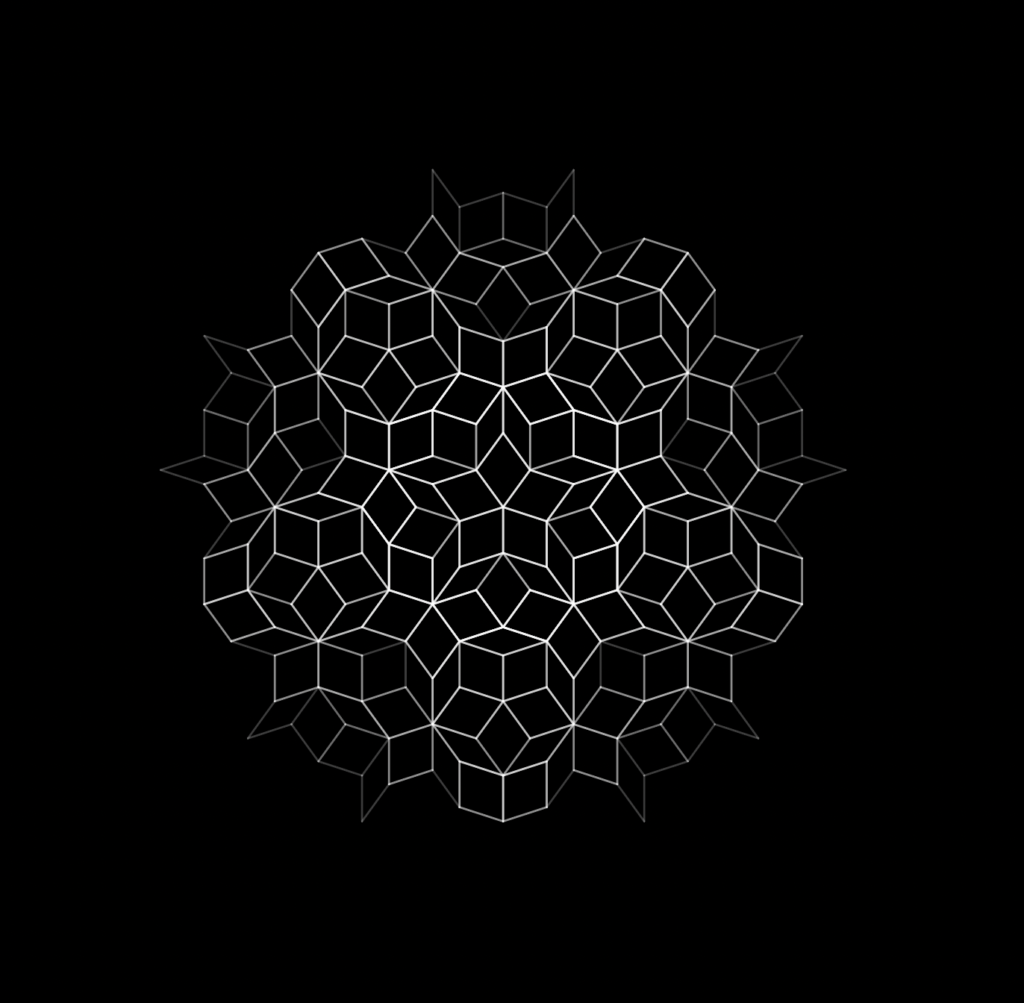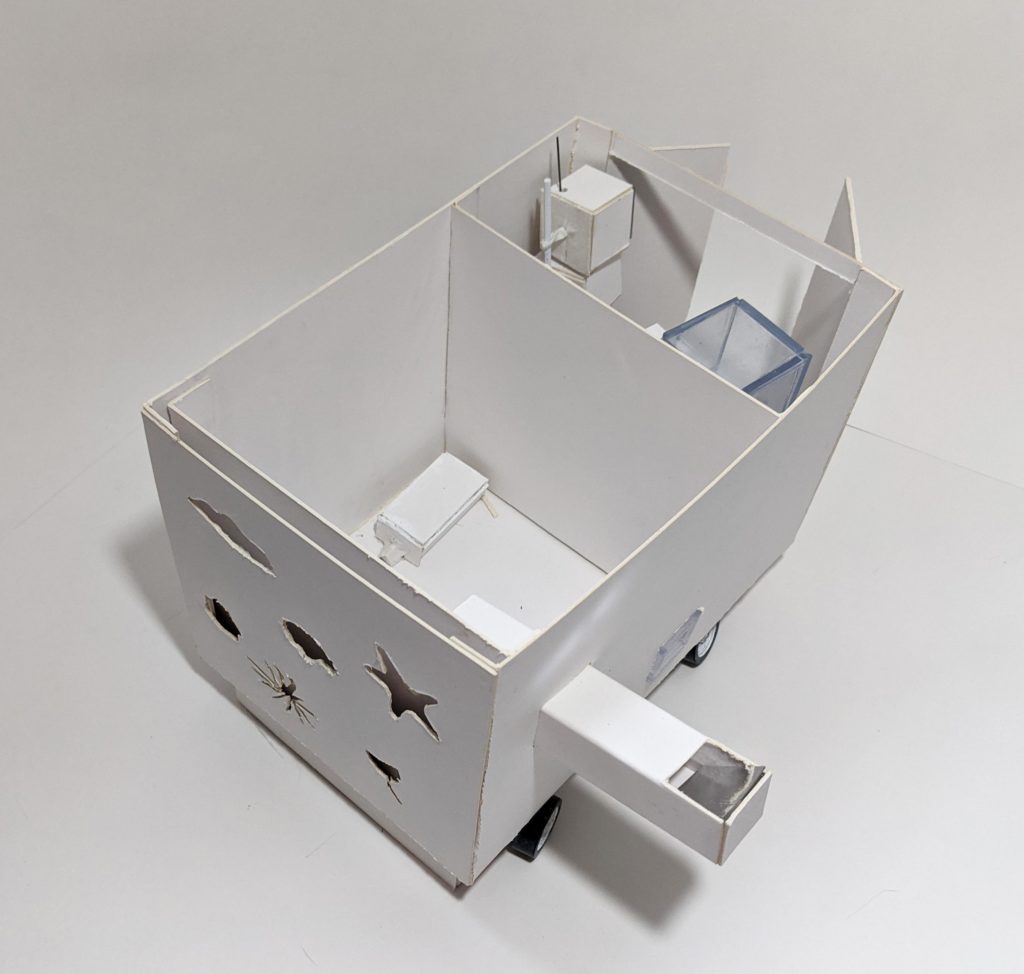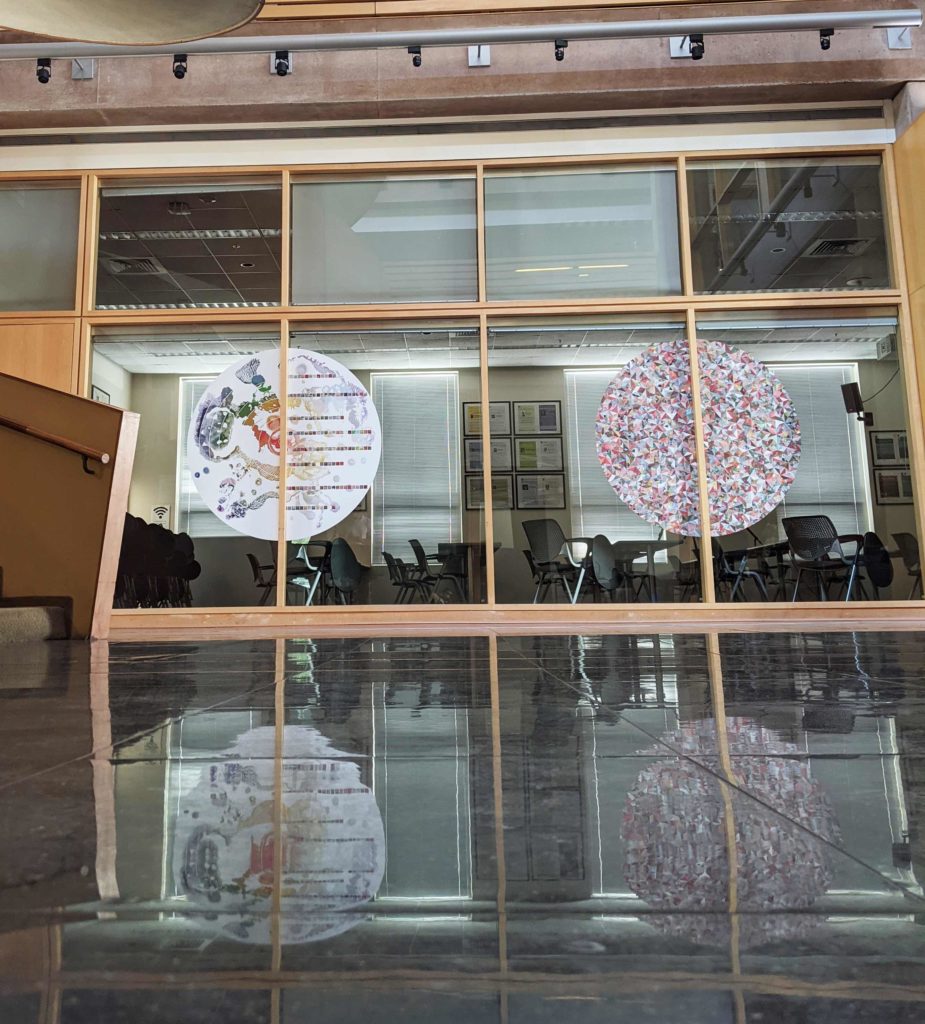Proximal Fields
Because of the pandemic, the Fields Institute was closed to the public, and remained closed for several months.
However, this doesn’t mean that it has been empty.
Peculiar sounds and intriguing silences, the flows of the few individuals and janitors occasionally visiting the building made it surprisingly lively. Microorganisms, dust specs and other invisible guests have populated the space undisturbed while the humans were away. The building is alive. Exhibition spaces are alive. they are living, breathing creatures populated by imaginary and real monsters, invisible creatures. Every time we intersect with these spaces to install exhibitions, to host (hopefully in the future) crowded events, to meet and play, we initiate a dialogue, every time different. These spaces are not to be used, but to be explored and to be taken care of.
For our participation in the Ars Electronica Gardens, we created Proximal Fields, a series of installations inspired by empty spaces and their intersection with life. To mark the presence of invisible microorganisms, we are unveiling two giant murals, and a AR app, the products of early experiments with proximity and microbial growth conducted during “Proximal Spaces.” We will also launch the concept and first prototype for a new post-pandemic mobile gallery, a space that is not just another container, but a living entity.

Proximal Spaces is a multi-modal exhibition that explores the environment at multiple scales in concentric circles of proximity to the body, inspired by Edward Hall’s 1961 notation of intimate (1.5ft), personal (4ft), social (12ft) and public (25ft) spaces in his “Proxemics” diagrams. In Fall 2020 at the height of the COVID-19 pandemic, a team of international BioArtists collaborated remotely on a montage of images of microscopic life in their everyday environment.
Proximal Spaces begins in the void, understood paradoxically as an empty space and a portal for growth. Hospitable conditions on an empty petri dish facilitate the growth and visualization of microbial colonies. Similarly, the empty spaces around us have become breeding grounds for non-human communities. The images in the mural are algorithmically attached to faces of Penrose tiling, perhaps highlighting the ways that capturing the post-perspectival scale of the invisible is both a mysterious and impossible task; and the ways that recursion and repetition are central to how the infinitely small may give rise to the beautiful world around us.
In addition to the mural, an Augmented Reality application reveals otherwise invisible digital microbes that have grown and thrived in situ, within rooms and spaces that have been largely devoid of human presence this past year. Joel Ong, Racelar Ho and Sachin Karghie collected data on ambient air movements, temperature and other interesting changes using a sensor-equipped IoT devices. The AR app is a speculative visualization of possible organisms that may thrive in situations and spaces devoid of human contact by working with data collected across the Fields’ physical spaces. These “creatures” based on initial drawings by Whittaker will come alive when using the app.
The team will continue to develop the App, working to create generative content through real-time and multi-location data processing.
Artistic Directors: Joel Ong, Elaine Whittaker
Graphic Design Programming: Natalie Plociennik, Bhavesh Kakwani
AR development: Sachin Khargie, Ryan Martin, Racelar Ho
Bioartists: Roberta Buiani, Nathalie Dubois Calero, Sarah Choukah, Nicole Clouston, Jess Holz, Mick Lorusso, Maro Pebo, Felipe Shibuya


Emergent is a post-pandemic mobile lab. Can we take the gallery to the streets and turn it into an emergent space? During the pandemic, many galleries had to shut down. The result was a proliferation of online spaces featuring virtual exhibitions and performances that the audience could experience from the safety of their home. Now that many institutions are reopening, should the gallery reach out to the public, rather than waiting for the public to come and pay a visit? Inspired by earlier independent pandemic responses, which bypassed the gallery and directly merged with the fabric of the city, Emergent has transformed into a mobile gallery which will roam the streets, offering opportunities for dialogues about emergent forms of life. This artifact is not just a container, but a living entity. It generates ideas about how we want to repopulate the city with arts.
We envision a post-pandemic living gallery interacting with human and non-human city dwellers. the gallery can be built in different cities by different individuals, following principles of sustainable curating. Rather than simply offering a curated experience in a preprogrammed box, it asks the local curator to be builder, collaborator, and caregiver of the mobile artifact and its content.
Concept: Roberta Buiani
Co-design + fabrication: Kavi
Concept brainstorm + co-design: Allan Gomes and Aadita Chaudhury
Design consultation and project assistance: Lorella DiCintio
Emergent is part of the project: Emergent: coping with complex phenomena, funded by SSHRC the Social Science and the Humanities Research Council
Trailer for Ars Electronica Festival September 8-12
Talk at Ars Electronica Festival
Elaine Whittaker: Canadian visual artist. She considers biology as contemporary art practice. Her artworks are an intersection of art, science, medicine and ecology. Her practice is based principally on installation, and includes sculpture, painting, drawing, and digital imagery, incorporating a range of materials: from the traditional -paint, pigment and wax- to the unconventional -mosquitoes, salt crystals, human cells, and live microorganisms.
Joel Ong: Media artist whose works connect scientific and artistic approaches to the environment, particularly with respect to sound and physical space. Professor Ong’s work explores the way objects and spaces can function as repositories of ‘frozen sound’ and, in elucidating these, he is interested in creating what systems theorist Jack Burnham (1968) refers to as “art (that) does not reside in material entities, but in relations between people and between people and the components of their environment.”
Roberta Buiani: Artistic Director of the ArtSci Salon at the Fields Institute for Research in Mathematical Sciences (Toronto). Her artistic work has travelled to art festivals (Transmediale; Hemispheric Institute Encuentro; Brazil), community centers and galleries (the Free Gallery Toronto; Immigrant Movement International, Queens, Museum of Toronto), and scientific institutions (RPI; the Fields Institute). She is a research associate at the Centre for Feminist Research and a Scholar in Residence at Sensorium: Centre for Digital Arts and Technology, at York University.\
Nina Czegledy: Toronto based artist, curator, educator, works internationally on collaborative art, science & technology projects. The changing perception of the human body and its environment, as well as paradigm shifts in the arts, inform her projects. She has exhibited and published widely, won awards for her artwork and has initiated, led and participated in workshops, forums and festivals worldwide at international events.
Kavi: Latvian/Canadian artist operating across multiple disciplines. Besides working as an educator and workshop instructor, Kavi also creates time-based installation pieces, does live VJing for electronic music events and enjoys collaborative projects. She has previously worked and exhibited with Fashion Art Toronto, Kensington Market Art Faire, Toronto Burlesque Festival, Sidewalk Toronto, Nuit Blanche and multiple music venues across Toronto. Kavi is currently pursuing a PhD degree in Digital Media at York University, Toronto, Canada.
Racelar Ho is a PhD student in Digital Media at York University. She primarily focuses on ‘the viability of digital games as an independent genre of fine arts,’ ‘the history, development, and discourses features of computer-generated arts’, ‘the influence of dialogues methodologies between creators and audiences under infinite virtual environments’ and seeks a way to smooth the gaps within science and humanities. As an artist, to construct a hybrid-infinite world to express her poetic thoughts about Zen dialogues in different dimensions and explore the idealistic world of transcendent beings are vital aims of her creation.



Proximal Fields is part of Ars Electronica Gardens (Anti)Disciplinary Topographies and Leonardo LASER
#LASERTalks #arselectronica21 #Leonardo/ISAST



Comments are closed